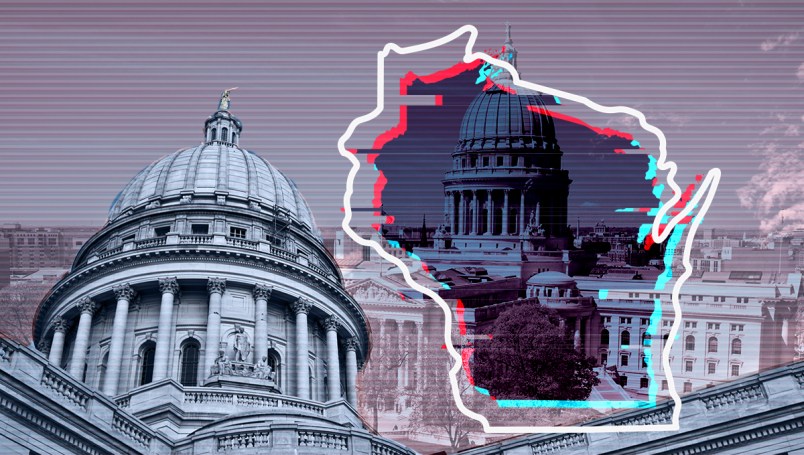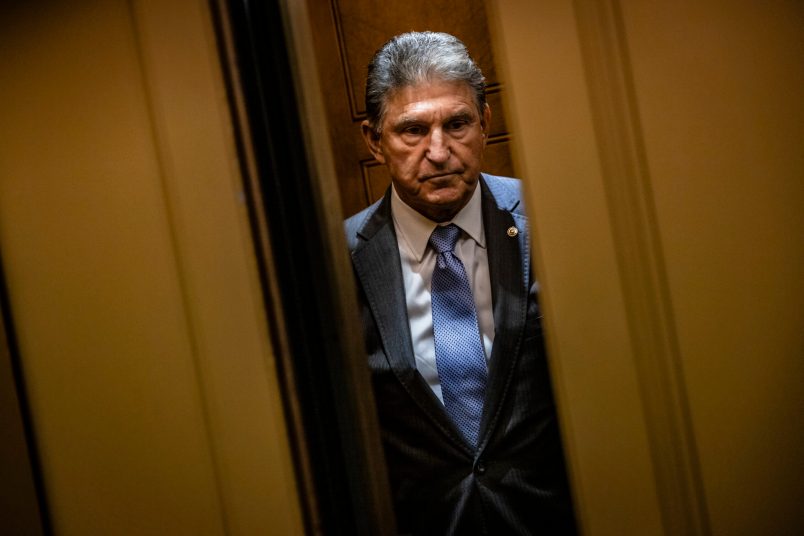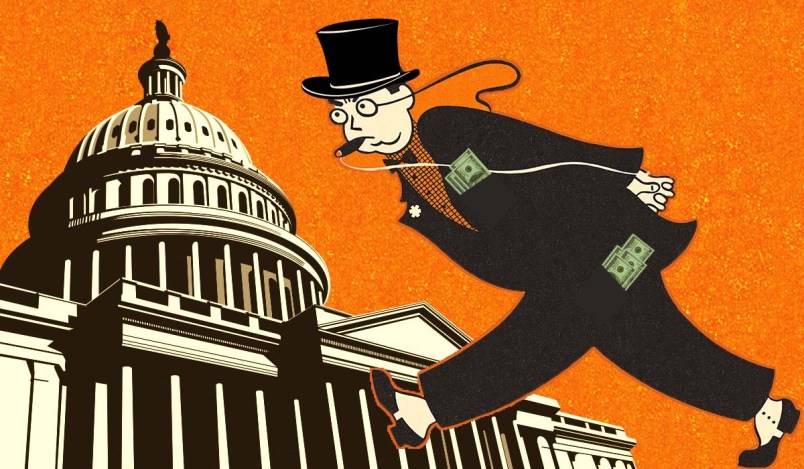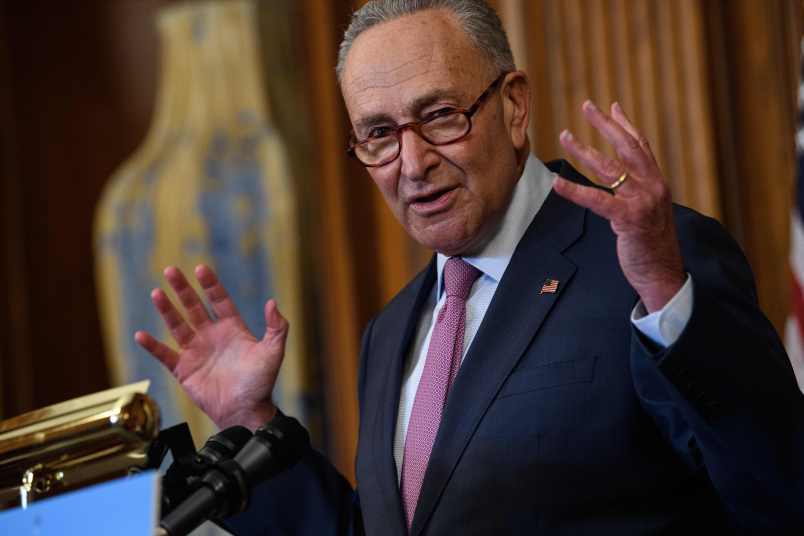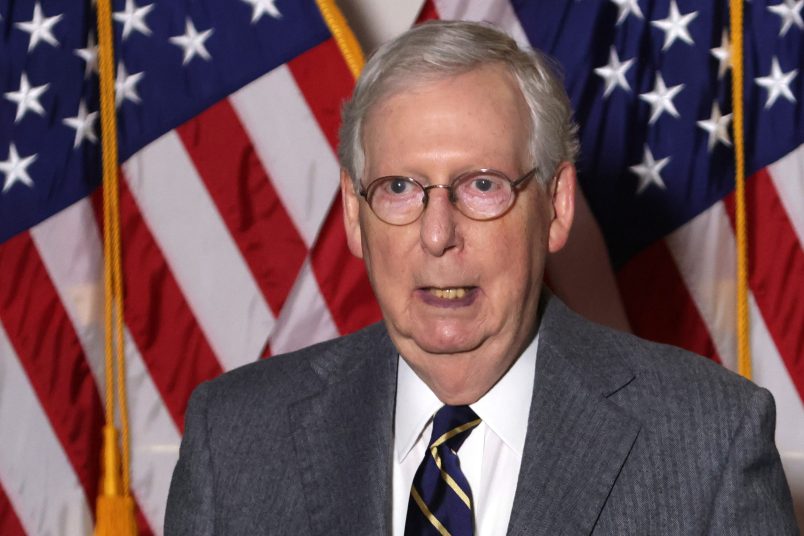Democrats are hoping they can maintain their recent hot streak in Wisconsin on Tuesday, in a state supreme court race that has major implications for the future of the key swing state.
Conservative judge Brian Hagedorn, a protege of former Gov. Scott Walker (R), is squaring off again against liberal-backed judge Lisa Neubauer.
Strategists on both sides of the aisle agree that the election has far-reaching implications for Wisconsin’s future, including the upcoming redistricting fight, voting rights, and legal challenges to the GOP agenda passed under Walker. Those include the attempted power grabs by the GOP-controlled legislature during Walker’s lame duck period and lawsuits against government tax breaks given to Foxconn for a massive project the company is building in southeastern Wisconsin.
“The stakes are really, really high,” said GOP strategist Brian Reisinger, a former adviser to Walker and Sen. Ron Johnson (R-WI). “The importance of the Wisconsin supreme court race is difficult to understate, when you look at the standpoint of all the reforms that have happened in Wisconsin over the last decade or so.”
If Neubauer wins, which strategists in both parties think is the most likely outcome, the court retains its current four-to-three conservative majority. Liberals would then have a strong shot at seizing a majority in next year’s state supreme court election — Democrats would have a huge advantage in the 2020 race because it coincides with the state’s Democratic presidential primaries and a Milwaukee mayoral race.
If Hagedorn wins, conservatives will have five votes on the court — and would be likely to maintain their majority for years to come.
Conservatives have controlled the Wisconsin Supreme Court for the past decade, allowing them to uphold controversial laws passed by Walker and the GOP that dismantled the state’s public sector unions, imposed strict voter identification laws, and created one of the country’s most effective gerrymanders — one that locked Democrats out of power for the decade and kept them in the minority even in years when they won significantly more votes statewide.
The race is also the biggest test to date of whether progressives remain as motivated as they were heading into the 2018 midterms.
Strategists in both parties see Wisconsin as one of the three most important states on the 2020 presidential map, along with Michigan and Pennsylvania, and Democrats recently announced that they’ll hold their presidential national convention in Milwaukee next summer.
“This is the first statewide contest in a battleground state since the 2018 midterms. And in Wisconsin, it’s the first post-Scott Walker election, although in a sense he’s on the ballot,” said Democratic strategist Joe Zepecki, who has done some work on the race and ran a number of past statewide campaigns.
The election comes at a time when Democrats have begun growing concerned that their base’s hair-on-fire enthusiasm to vote in every election since President Trump’s upset win has been dissipating. Democratic candidates outperformed Hillary Clinton by an average of 10 percentage points in special elections in 2017 and 2018. That’s dropped to just 0.4 percent in the 22 special elections that have occurred since the midterms, according to data compiled by the Daily Kos.
The race will also test whether Republicans have recovered after the midterms. The Wisconsin Republican Party hase been considered the gold standard of statewide turnout machines in the past decade. However, Walker’s loss, House Speaker Paul Ryan’s (R-WI) retirement, and former state and national party chairman Reince Priebus’s ignominious exit from the White House has removed the party’s powerhouse trio (though sources say Priebus has been helping behind the scenes on the race). It’s unclear whether conservatives can keep up their vaunted turnout game with Walker out of the picture.
“The real question is, has the Republican Party recovered enough to engage turnout?” asked one senior Wisconsin GOP strategist.
It’d be an overreach to interpret this race’s results as a clear indicator for the 2020 presidential election — off-year springtime elections are notoriously low-turnout affairs.
But recent off-year elections in the state were a warning sign of where the state was headed in higher-profile races. Democrats won a key state supreme court race last year as well, and picked up a heavily Republican-leaning state senate seat the year before, results Walker himself publicly warned were a sign that he was in trouble. Wisconsin Gov. Tony Evers (D) beat him by just over a percentage point last fall, as Sen. Tammy Baldwin (D-WI) cruised to a surprisingly large 11-point victory.
Conservative-backed Hagedorn is also uniquely flawed as a candidate. He helped found a private religious school that bars teachers, students and parents from being in same-sex relationships. He made paid speeches to a group that advocates making sodomy illegal and sterilizing transgender people. And as a 27-year-old law student just over a decade ago, Hagedorn wrote pieces addressed to “fellow soldiers in the culture wars” that called Planned Parenthood a “wicked organization,” the NAACP a “disgrace to America,” and repeatedly compared same-sex relationships to bestiality.
“The idea that homosexual behavior is different than bestiality as a constitutional matter is unjustifiable,” he wrote in one blog post.
“He’s been damaged by some old, out-of-touch views, to be very polite, and because of that I think she’s in a good position to win on Tuesday,” Rep. Mark Pocan (D-WI) told TPM. “I’m pretty confident.”
Because of that, a number of groups that normally come in to help conservatives in the state have stayed out of the race. The U.S. Chamber of Commerce avoided the election, while the Wisconsin Realtors Association pulled its endorsement after Hagedorn’s past statements came to light.
And Democratic-aligned groups have been spending big on the race. That includes former U.S. Attorney General Eric Holder’s National Democratic Redistricting Committee, which dropped roughly $350,000 on the race, and Planned Parenthood, which has spent more than $120,000.
“Whoever this justice is will be on the court when new maps get drawn in 2021, which means we need people there who are for fair, neutral, nonpartisan maps, since Wisconsin is one of the most gerrymandered maps in the country,” said NDRC spokesman Patrick Rodenbush.
Liberal-backed Neubauer has outraised Hagedorn, and combined with her outside support, has outspent him by a wide margin on the airwaves in the race’s final weeks. The Republican State Legislative Committee came in with a last-minute ad buy this week, which the group promises will exceed $1 million by election day. Yet even with that cash injection, Neubauer and her allies have a nearly two-to-one advantage over Hagedorn in TV ad points.
There has been no public polling of the race. Recent private polls indicate Neubauer has a lead in the mid-single digits, but low-turnout races are notoriously hard to poll, leaving the chance of a Tuesday surprise.
But Democrats are feeling good about the race — and hope they hope to be able to use it to keep up the momentum to seize control of the court next spring and help defeat Trump next fall.
“The stakes are high,” said Zepecki. “This is a race progressives have to win.”


